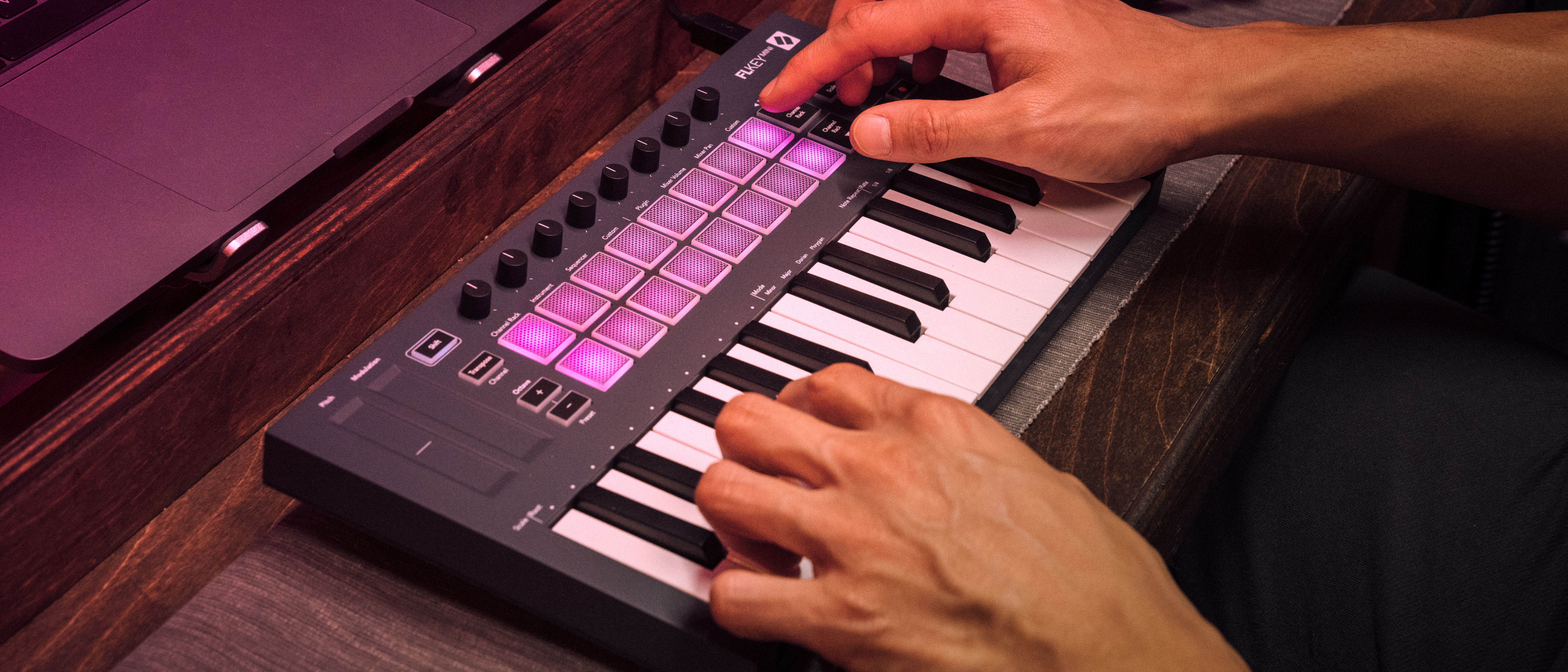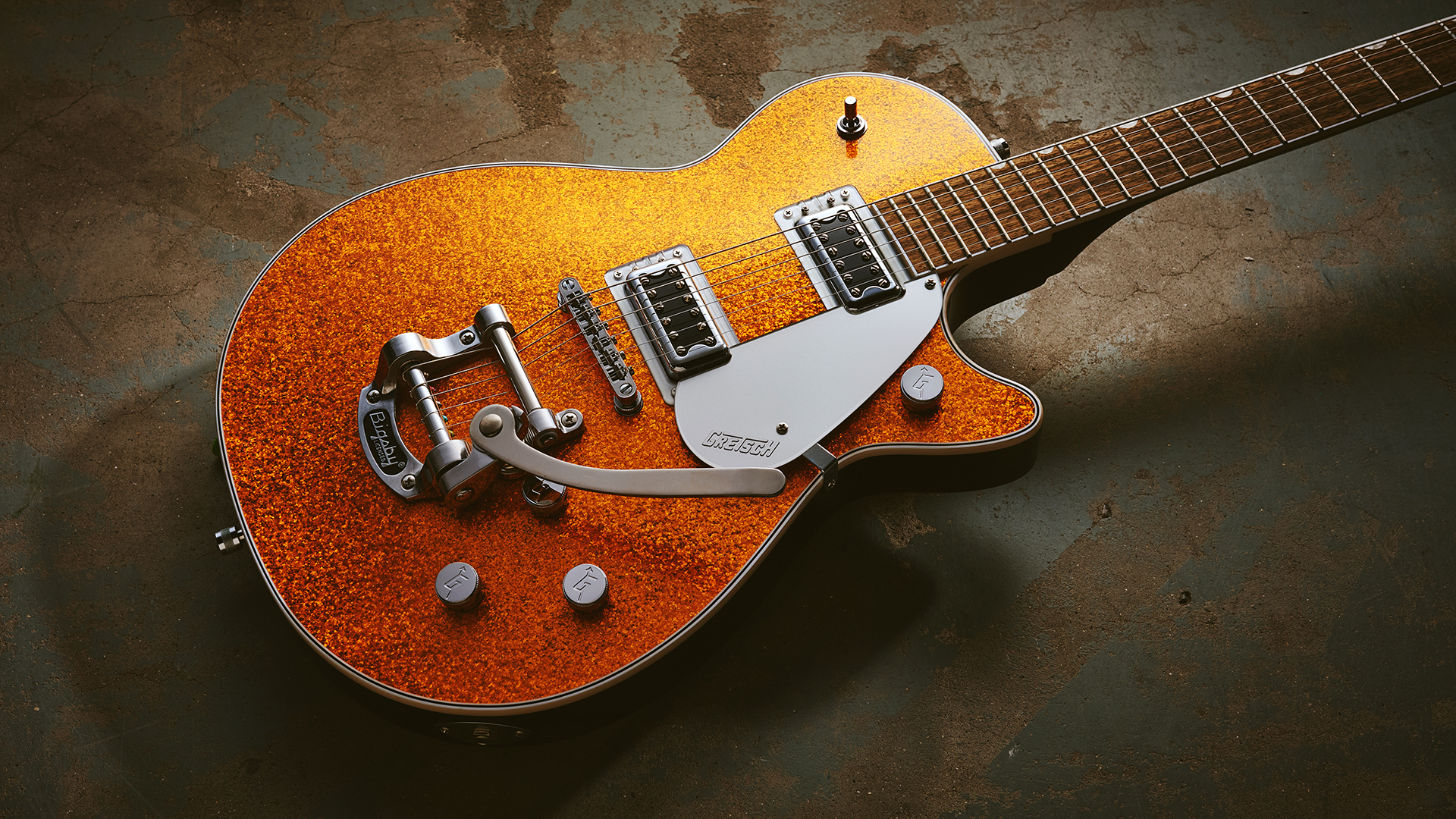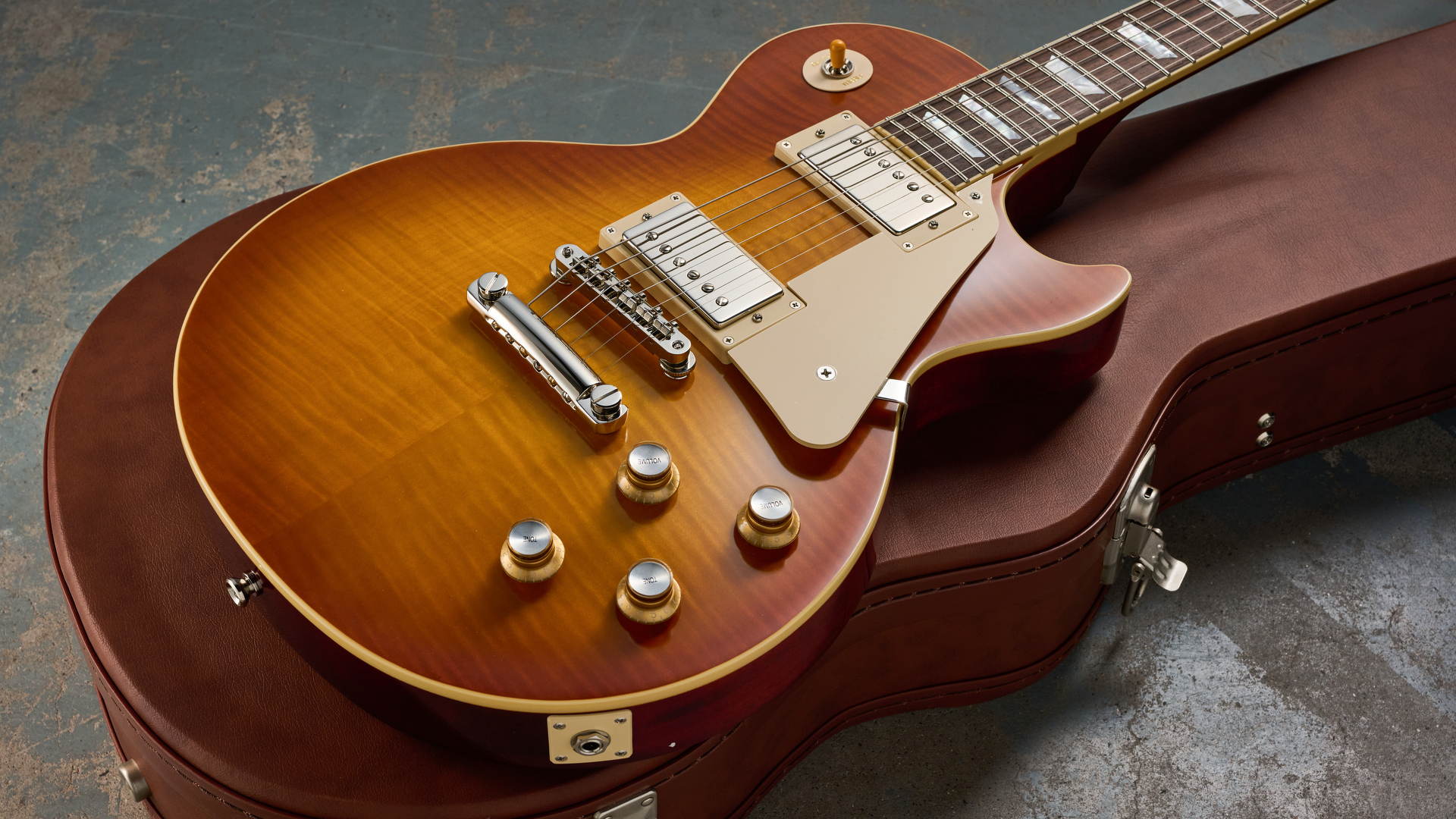MusicRadar Verdict
Not that there’s a lot of competition, but even if there was, the FLkey range, in particular the FLkey 37, are superb controllers for FL Studio - they’ll prove essential for live and studio use alike.
Pros
- +
Quality controllers with immediate access to the most important FL Studio functions.
- +
FLkey 37 users will benefit from the larger size; FLkey Mini users will benefit from the portability of the smaller format - both are good!
- +
The control layout is as clear as could be, and we appreciate the brutalist squared-off case.
- +
The pads are great and useful in so many ways - sequencing is a breeze.
Cons
- -
Not keyboards that you’d use for multiple DAWs - there are others for that.
- -
Would love to shoehorn a display onto the Mini!
MusicRadar's got your back
Novation FLkey 37 and FLkey Mini: What is it?
Given how long FL Studio has been around in its various forms (Fruity Loops came out in 1998, can you believe it?), the question is really ‘why didn’t this happen sooner?’.
Akai’s Fire gave FL users their first dedicated controller, and now Novation brings us the FLkey 37 and Mini keyboard controllers. We had both the FLkey 37 and Mini in for review - we’ll focus mainly on the 37, and refer to the Mini only when there are differences between the two models.
They’re both grey and unashamedly boxy; stylistically more in common with hardware synths than generic MIDI keyboards. Physically and functionally, these are directly comparable to Novation’s Launchkeys, which cater for Ableton Live users.
The top panel of the FLkey 37 includes pitch and mod wheels, 16 RGB backlit pads, 8 knobs, an LCD display, and 24 buttons. Then of course there’s the keyboard, a rather nice 37-key affair.
The rear panel features USB connection, full-size MIDI DIN out (excellent to see this), and a 1/4” sustain pedal input. The FLkey Mini lacks a display, and has touch strips for pitch and mod, with just 10 buttons. The rear panel features are the same, other than the fact that the MIDI DIN has been replaced by a 1/8” jack which will need an adaptor to connect to other gear.
Putting them side by side, there’s no feeling that the Mini is a cop-out, it feels perfectly credible in its own right. The software bundle features a six-month trial of FL Studio Producer Edition, as well as XLN Audio Addictive Keys, Kievgrand Reverb, Kievgrand DAW Cassette, Applied Audio Systems Session Bundle, and Spitfire Audio Expressive Strings. For the review, we required an updated version of FL Studio, and this will be available to all by the time the keyboards reach the stores.
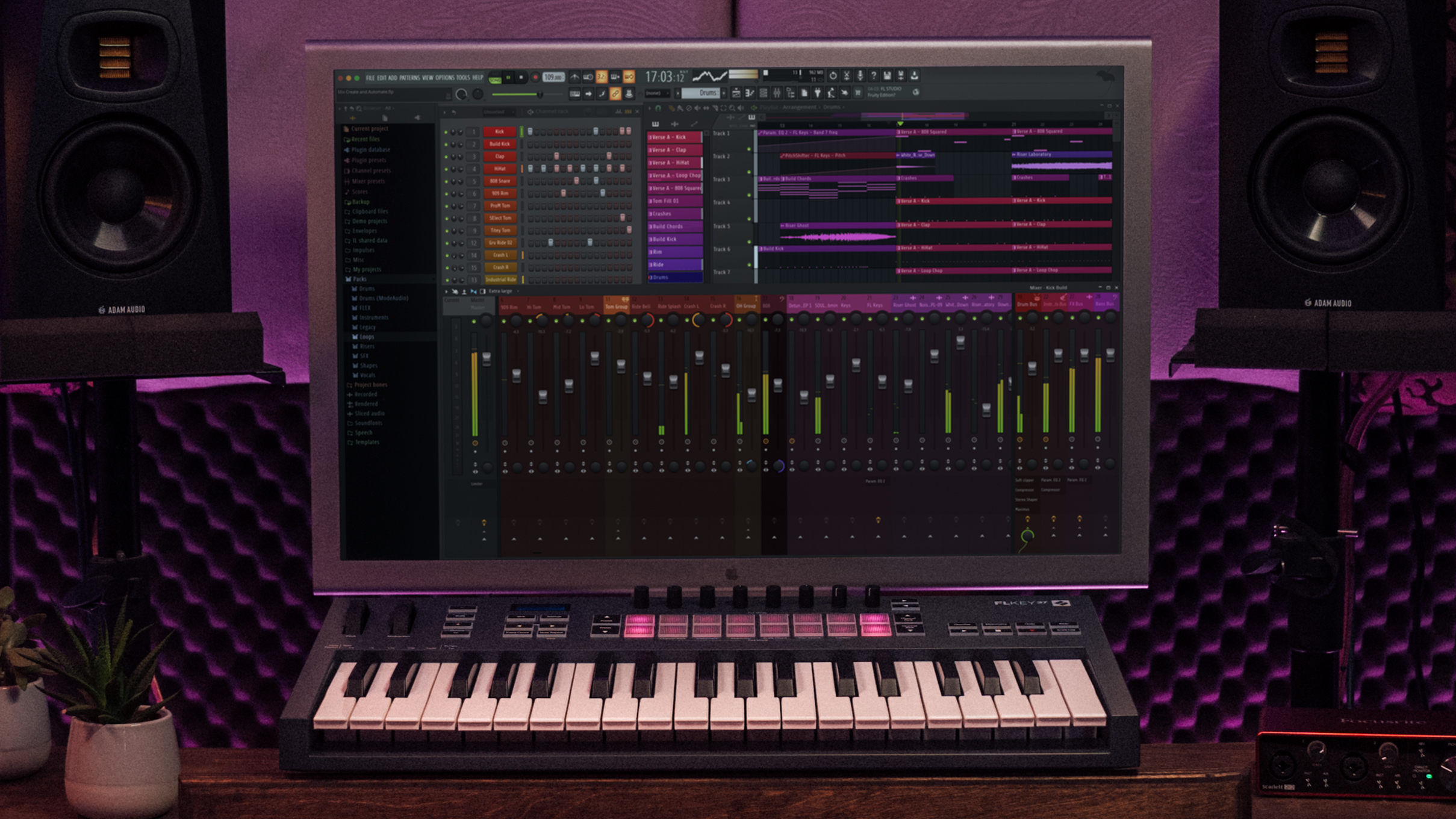
Novation FLkey 37 and FLkey Mini: Performance and verdict
The FLkey 37’s keys are of the full-size synth-type variety, and they’re part of what makes this such an enjoyable controller, contributing to the out-of-the computer vibe. The pads are velocity-sensitive, and change colour depending on the job at hand for added visual feedback.
The knobs are large enough to get a decent hold on, and all of the buttons are backlit so they’re identifiable in a shady environment.
The Mini has its compromises, but the functionality’s still there; still good for instruments, finger drumming (and velocity sensitive), as well as button functions.
The Scale modes apply to notes played on both the keyboard and pads. Press Shift/Scale to select a scale, referring to the display on the 37, and the labelled keys on the Mini. When the Scale button is lit, the last selected scale is playable on the pads or keys.
The 37 also has a chord mode, where one will be played per keyboard note, or they can be generated based on a selected scale, or custom chords can be triggered from the pads.
Alongside the pads are preset buttons, which are used to navigate through instrument presets in FL Studio, while referring to the display (accomplished via the Shift/Octave buttons on the Mini); this is a massive convenience if you’re in the zone during a session.
There are also buttons for navigating Channel Racks, transport control, the Score Log (which captures your most recently played MIDI part - on the 37 only), and undo/redo.
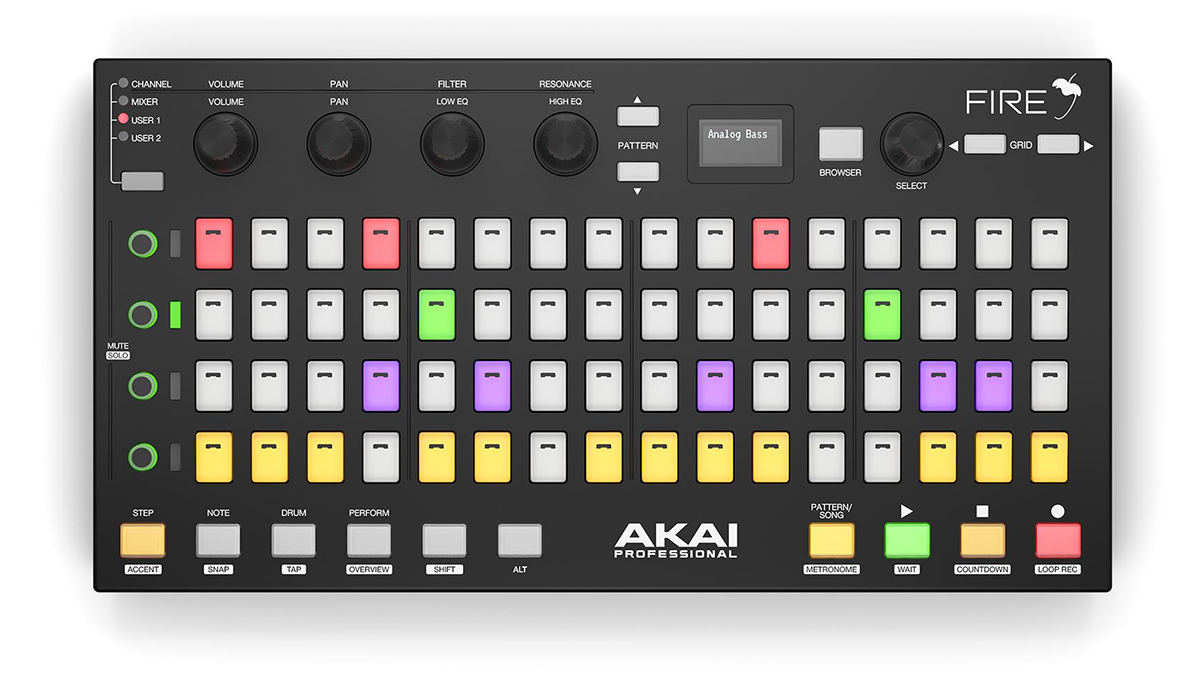
• Akai Fire
There aren’t many dedicated controllers for FL Studio - the first was Akai’s Fire, which takes a different tack from the FLkeys, based around 4x16 pads. This device is focused on particular elements, rather than trying to fit everything in.
• Image-Line Remote
This is a free controller app that’ll run on either iOS or Android, and connects to your Mac or Windows computer hosting FL via wifi. It combines pre-configured tabs that correspond to specific FL areas, as well as user-configurable elements.
The pads are part of the navigation process, as we’ve already alluded to, and we preferred this method in comparison to some other hardware devices we’ve used, where there was just too much scrolling on little displays.
For example, press Shift/Instrument, to interact with the current instrument settings, either through the pads with something like the Slicex sampler, or through the knobs and keys with the Fruity DX10 keyboard instrument.
We found it was easy to develop an organic workflow, loading presets, sequencing patterns, tweaking effects, and playing the keys; long stretches of time pass by without feeling the need to touch a keyboard or trackpad.
For us, the sequencing was the most enjoyable part of the process; loading a sound, sequencing a few patterns in a rack, then playing the keyboard on top - this was a fluid and productive experience.
If you want to go beyond the default factory assignments, you can use Novation’s Components browser-based editor to create custom assignments, such. The pads can be repurposed to send any MIDI note, CC, or PC, on any channel, with or without velocity; all very useful if you use more than one DAW, or if you use external hardware.
What we have here are two very nice keyboard controllers, that we think will become the no-brainer de facto hardware controllers for FL Studio. As with the best of these controllers, it feels like the software has broken out into the hardware world, there’s a noticeable reduction in time spent looking at the computer screen or reaching for a mouse or trackpad.
The Mini is a flexible little controller that you can take anywhere and fits into the smallest nook in your studio or live rig, but if we were going to choose just one model, it’d be the FLkey 37 - that display and the extra buttons, and the expanded playing functions, make it worth the extra money and the extra space, recommended for any FL Studio user seeking keyboard integration and hardware control.
MusicRadar verdict: Not that there’s a lot of competition, but even if there was, the FLkey range, in particular the FLkey 37, are superb controllers for FL Studio - they’ll prove essential for live and studio use alike.
Novation FLkey 37 and FLkey Mini: Hands-on demos
Novation
Novation FLkey 37 and FLkey Mini: Specifications

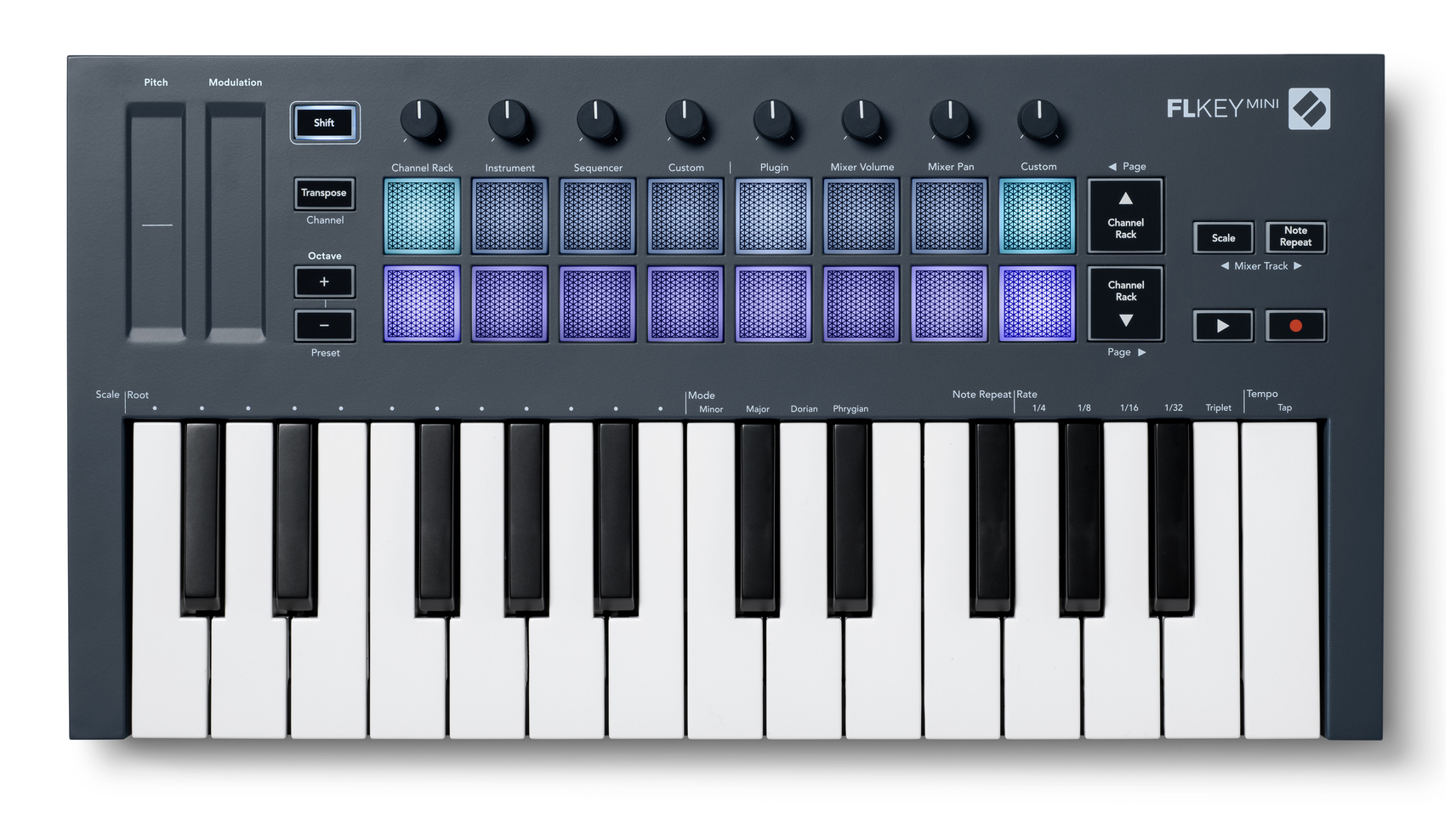
- KEY FEATURES: Fully integrated with FL Studio, including the Sequencer, Channel Racks and Mixer; 16 pads for performance and slicing; eight knobs for volume, pan, and automation; transport buttons; FL Studio plug-in preset browsing; chord mode (FLkey 37 only); software suite includes FL Studio Producer Edition 6-month trial, virtual instruments and effects.
- I/O: MIDI out, USB, sustain pedal in
- CONTACT: Novation

Martin Delaney was one of the UK’s first Ableton Certified Trainers. He’s taught Ableton Live (and Logic Pro) to every type of student, ranging from school kids to psychiatric patients to DJs and composers. In 2004 he designed the Kenton Killamix Mini MIDI controller, which has been used by Underworld, Carl Craig, and others. He’s written four books and many magazine reviews, tutorials, and interviews, on the subject of music technology. Martin has his own ambient music project, and plays bass for The Witch Of Brussels.
“If you’re a singer, you’re totally reliant on your body. You can't put a bit more distortion on your amp or use effects. You can’t compensate. You’re very exposed”: Why Iron Maiden had to change their singer to reach the next level
“The effects of these sudden and unpredictable tariff actions will have a long-term effect on musicians worldwide”: Guitar industry leaders to meet with Trump in a bid to avert “devastating” impact of tariffs
“The only difference for me between me calling it an album and a mixtape is what I went into it thinking it was”: PinkPantheress on why her new project, Fancy That, is a mixtape rather than an album
